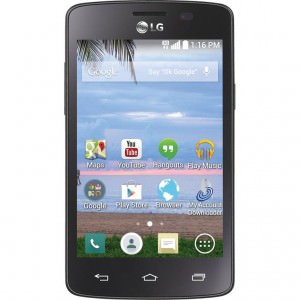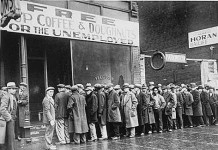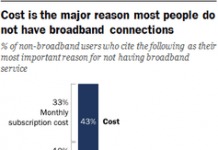 Were you curious about how good that $10 Android smartphone on offer at Wal-Mart is? Ars Technica has given it one of the exhaustive reviews that they usually do of considerably more expensive hardware—and it turns out, that’s the wrong question. The right question to ask would be exactly how terrible it is—and it turns out, the answer is very terrible.
Were you curious about how good that $10 Android smartphone on offer at Wal-Mart is? Ars Technica has given it one of the exhaustive reviews that they usually do of considerably more expensive hardware—and it turns out, that’s the wrong question. The right question to ask would be exactly how terrible it is—and it turns out, the answer is very terrible.
The cognitive dissonance in reading a review this thorough of a device this cheap is considerable. It’s like having a professional sommelier report on MD 20/20, or reading a high-performance sports car magazine article about a Yugo. Ars Technica probably paid Ron Amadeo many times more money for writing it than it paid for the phone itself!
As for that phone, Ars says, it’s “better than nothing, but not by much.” The build quality is terrible, the specs are terrible, the viewing angles are terrible, the screen is terrible (it can only display 65,000 colors, not the 16 million most screens today use, so anything you view on it is going to be dithered), the camera is terrible, the UI is terrible…terrible terrible terrible.
What isn’t terrible? Oddly enough, the operating system.
It feels weird saying this about a device that runs an OEM-skinned version of Android 4.4 KitKat in 2015; but the software is the highlight of the LG Sunrise. It runs a real version of Android, complete with all the apps and features you would expect from any other smartphone. You’ve got the Play Store and access to over a million apps, along with all the Google apps and access to just about every Google service. Running on Android 4.4 doesn’t really slow the Sunrise down when it comes to Google apps. You get up-to-date versions of everything, thanks to Google Play Services filling in most of the functionality gaps.
I’ve used my share of cheap TracFones, including TracFones that pretend to be smartphones but aren’t. Even getting a terrible smartphone at that price is pretty amazing when it’s a real smartphone. My parents still use TracFone “dumbphones” and for this price, it’s tempting to get a real Android phone for one or both of them just because even the lousiest smartphone would be so much more useful than their cheap candy-bar phones.
And for $10, it almost doesn’t matter that this looks like somebody took a toy phone you’d get out of a Happy Meal and stuck the guts of a real (cheap) phone inside it in place of the sticker on the front. If you need some kind of inexpensive burner phone that can actually run real Android applications, well, there you go. Just remember you’re going to have to buy TracFone cards to keep using it over time.
For my part, it’s interesting to contrast this to what you can get in a tablet. Even though the cheapest tablets you can get these days are in the $30 to $50 range, even the cheap Chinese OEM tablets have considerably better performance (assuming you can get one that doesn’t come with trojans embedded in it). Amazon’s Fire is amazingly better-made. Granted that a $10 device would be great for helping bridge the digital divide in theory, in actuality I’d tend to recommend someone save a few more $10 bills and get a tablet instead—it’ll be considerably more useful for the money in the long run. (If they’re just getting one device, anyway. I suppose there isn’t any harm to having one of these instead of a similarly-priced dumbphone as long as they’re not relying on it to be their only digital device.)
But this is probably to be expected. Unlike tablets, cell phones have to have a cellular radio transceiver in them. Due to patent licensing and such, that transceiver usually accounts for a hefty chunk of the expense of the device—much more than the cost of parts alone. That’s why smartphones are usually a hundred-plus dollars more expensive than a tablet with similar specs. So when you get any smartphone that’s only $10, even less of that cost could be spent on ordinary phone parts.
And this is probably just the forerunner of things to come. Sooner or later, there will be higher-quality $10 smartphones—and today’s $10 phones actually will be Happy Meal prizes. And won’t that be great for the digital divide when it happens?


































Times have changed. I just finished reading Jon Gertner’s history of Bell Labs, The Idea Factory. I was disappointed that he made only passing mention of the birth of Unix, but the rest of the book was quite interesting, including the birth of the idea of cell phones just after WWII. It took a long time for the technology to improved to the point that the FCC was willing to offer spectrum for it.
Perhaps most interesting was what cellular replaced. In the 1970s,getting a telephone in your car often meant waiting years because there were so few slots available and the cost was many thousand dollars a year in today’s money. Even the rich had to think twice before putting themselves on the waiting list.
Now the phones cost no more than a few cups of coffee and service is often a dime a minute if you prepay. Make few calls, and you’ve got a with-you-all-the-time for only a few dollars a month.
—–
That is, of course, why Bill Gates Jr. and other rich geeks claim that life today is great. Today, even the poor can afford what once only the rich could afford. But Gates and others forget what really matters. Children growing up a couple of generations ago could be almost certain that, baring the death of one of their parents, they would grow up in an intact family. They weren’t ripped apart by divorce.
There are other differences too. Abagail Adams, wife of our second president, wrote a letter that makes it clear that she regarded a several mile walk in the dark as risk-free. Life not only used to be safer, people often had no concept that it could be otherwise.
And even more surprising is the backstory to a 1908 novel, Anne of Green Gables, which I’m listening to now. When aging brother bachelor and sister spinster decide to adopt a boy, there’s a mixup and the orphanage sends an 11-year-old girl, Anne, instead. There’s no vetting process. It’s enough that someone they know says the couple is OK. Anne is placed on a train with no adult accompaniment. With her new family she’s free to roam in the woods or run to neighbors a mile or more away. Nothing surprising there. That’s how I grew up in the 1950s.
You can take it either way. Either life was much safer back then or we live in a paranoid age, particularly when it comes to children. But what’s clear is that back then (and when I was young) Anne had more freedom and more feeling of safety than children growing up today have.
There’s also an interesting twist. One night, a girl Anne’s age shows up desperate for help. Her parents are away visiting relatives and the baby has whooping cough, which could be fatal. Anne says that is no problem, that she has cared for babies with that before. When a doctor finally arrives the next morning, he credits Anne with saving that child.
How many kids raised in today’s world with ever hovering ‘helicopter parents’ could have that easily taken on the care of a very sick baby? Follow the news, and many of college age can’t seem to cope with a POV that differs from their own.
You might ask yourself which is better, Anne’s world, where children grew up with a strong sense of safety and competence or our world when fear seems to be the norm. I know what I think. There are more important things in life that smartphones and tablets.
Here’s the book I’m listening to. Although free, the narration is great. People take parts and the one playing Anne is perfect. She sounds just like an Anne.
http://www.loyalbooks.com/book/anne-of-green-gables-by-lucy-maud-montgomery
I just recommended the book to a would-be writer I know. Good stories get readers liking the main character. This tale makes Anne, for all her flaws, is delightful and adorable.
You know what disgusts me. People who sneer at times like these and books like this one.
–Mike Perry
Mike, it’s impossible to judge children’s actual safety during that period. The reported murder rate was much, much lower than today, but murders generally weren’t reported to any national agency. The reported murder rate rose by about 500 percent between 1900 and 1930, but a lot of that was just because more people were reporting the murders. Also, if a child died in the home, the deaths were almost never investigated. A lot of children just disappeared. With no identification system, no one can say how many were killed and how many were runaways.
We do live in a more paranoid time. I certainly felt safer growing up in the 1970s than kids do today, even though the crime rates were worse then than now. Television did a much better job of reporting the actual news rather than hype. There were no 24-hour news channels, and the local news didn’t feel the need to build on fear to improve ratings.
Still, I’ll take the modern world, warts and all, just because children don’t get whooping cough unless their idiot parents refuse vaccinations.
Mike, thanks for the audio book link.